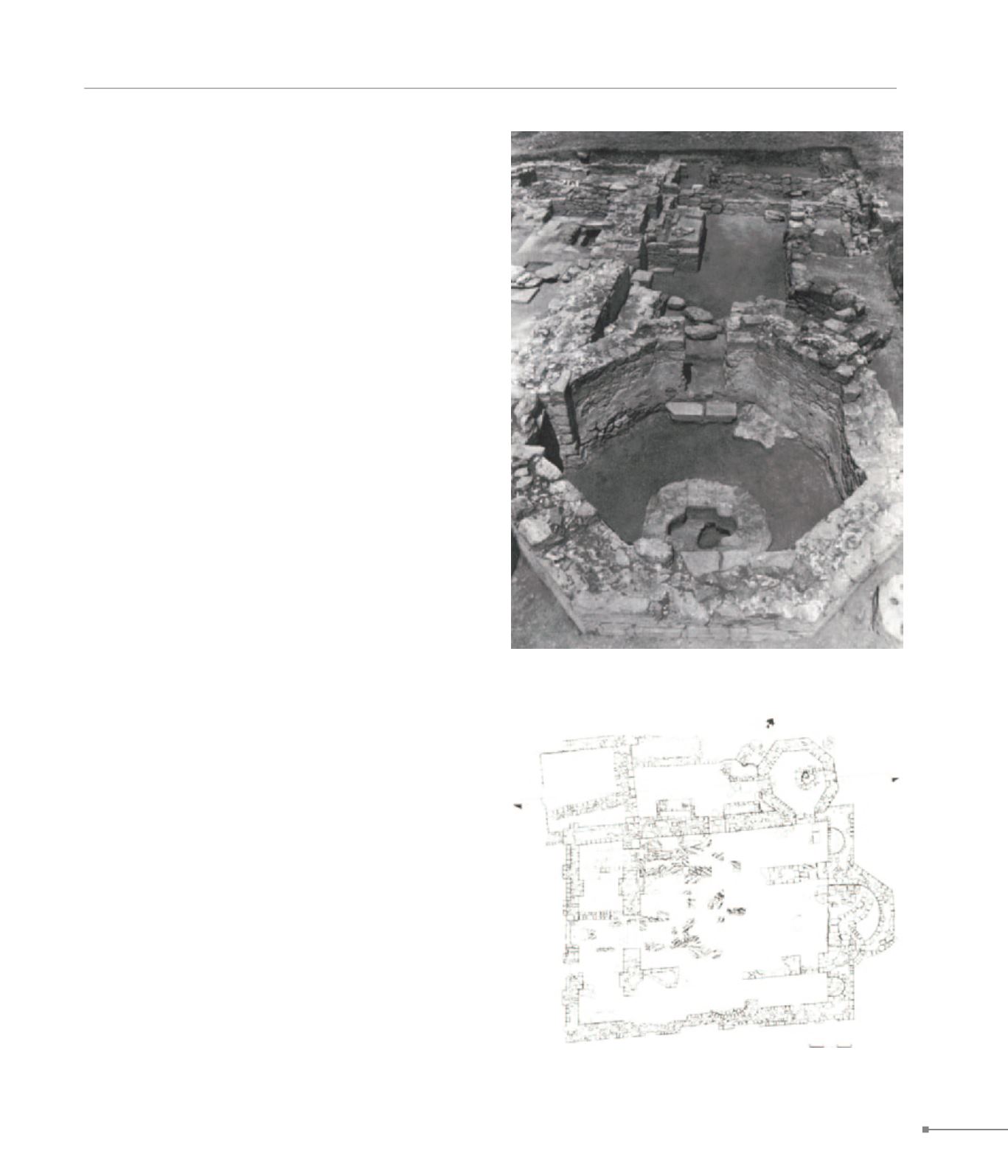
Amaxades.
Kosmiti.
THRACE
93
same period as the church, was initially located around it and
after the first transformation of the building it developed in the
narthex and the side aisles.
23. Polystylon, episcopal church, baptistery (Πολύστυλον, επισκοπικός
ναός, βαπτιστήριο)
23. Polystylon, episcopal church, ground plan (Πολύστυλον,
επισκοπικός ναός, κάτοψη)
24.
Amaxades.
Remains of an Early Christian construction have been reported.
25.
Filia.
At the Kale site a fortress of the Byzantine period, as well as a
cistern, is preserved.
26.
Xanthi
.
Xanthia.
Known from the Mid-Byzantine period onwards, Xanthi was a
see from the 9th c., raised to archdiocesan status circa 1316
and later, before the mid-14th c., to a metropolis. For about
two years (1343-5) it was the seat of the local Bulgarian ruler
Momchil. At the fortress of Xanthi, towers dating to the early
Mid-Byzantine period have been identified and there were sev-
eral alterations to the fortifications at subsequent times. On the
slope below the fortress, the church of the Taxiarchs survives,
a triconch building with dome, dating from the Mid-Byzantine
period with subsequent interventions extending to the 19th c.
The W barrel vault has been demolished.
27.
Toxotes.
Architectural remains and fragments of mosaic floor have been
discovered around the rail station at Toxotes. They probably
belong to the Topeiros region and date from the Roman or
Early Christian period. Boundary inscriptions have been found
near the bridge.
28.
Kosmiti.
At the Muslim cemetery of the Kosmiti village there are pieces of
architectural components and Early Christian inscriptions. They
may originate from Topeiros (Paradeisos).


